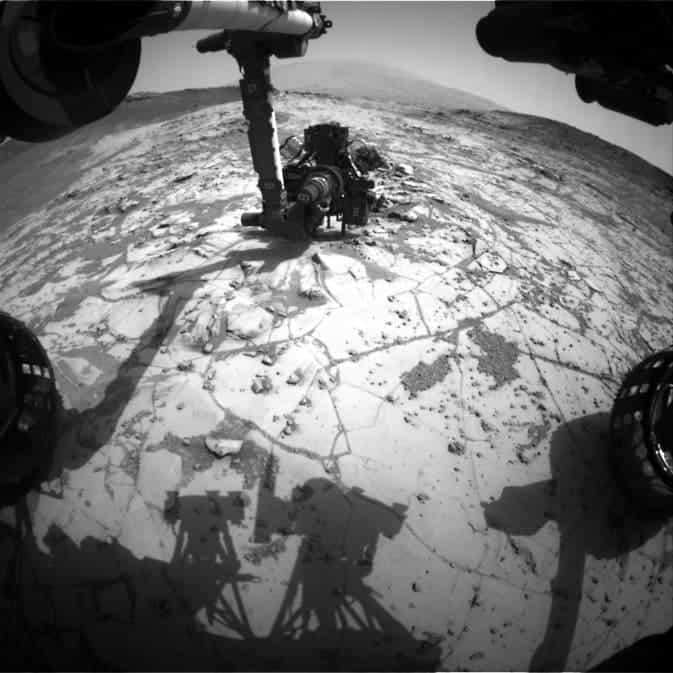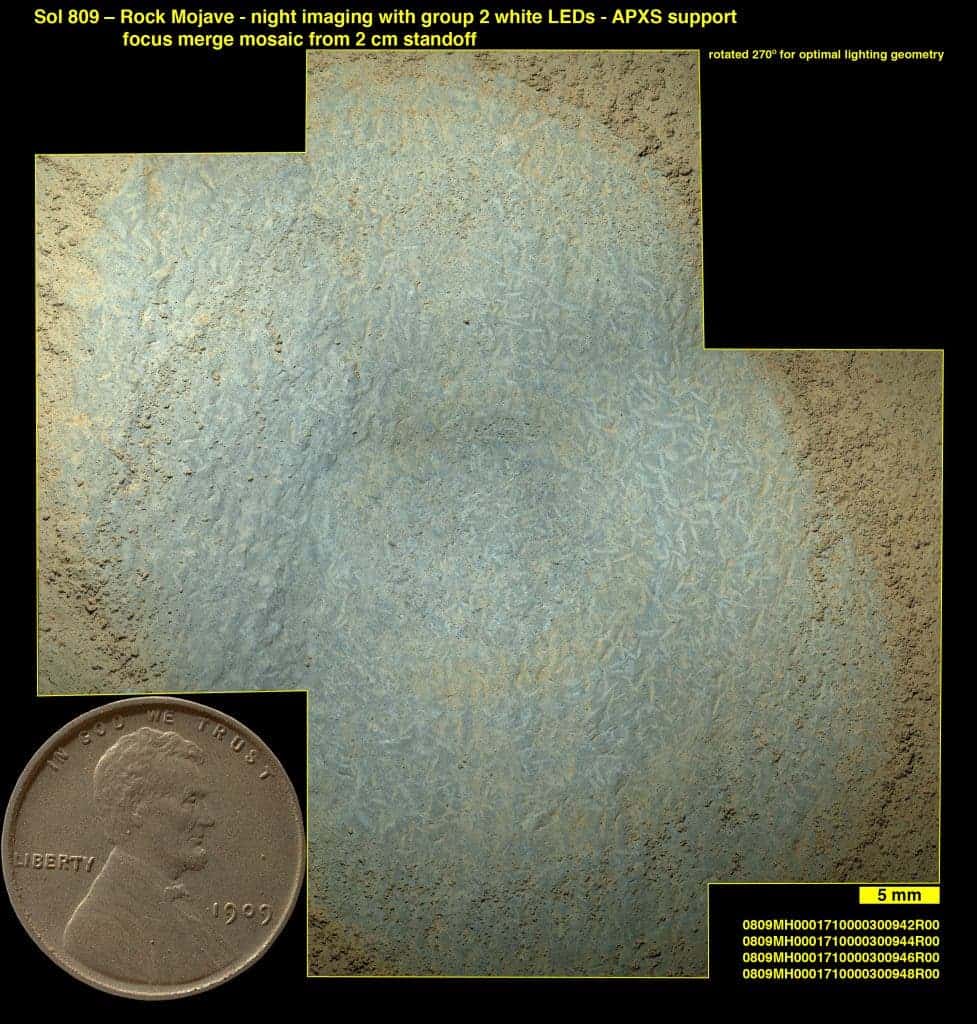Curiosity is preparing for its second drill on Mars – its eyeing a rock which may have a salty story to tell.

This view from the wide-angle Hazard Avoidance Camera on the front of NASA’s Curiosity Mars Rover shows the rover’s drill in position for a mini-drill test to assess whether a rock target called “Mojave” is appropriate for full-depth drilling to collect a sample. It was taken on Jan. 13, 2015.
Image Credit: NASA/JPL-Caltech
The Mojave rock displays copious slender features, resembling rice grains which appear to be small crystals of salt. The crystals may be left overs from a salty lake from which water has evaporated. This week, Curiosity is beginning a “mini-drill” test to assess the rock’s suitability for deeper drilling, in which it would take the sample in and analyze it. However, we don’t know for sure what the crystals are… they could be something entirely different.
“The crystal shapes are apparent in the earlier images of Mojave, but we don’t know what they represent,” said Curiosity Project Scientist Ashwin Vasavada at NASA’s Jet Propulsion Laboratory, Pasadena, California. We’re hoping that mineral identifications we get from the rover’s laboratory will shed more light than we got from just the images and bulk chemistry.
We probably won’t know for sure until Curiosity actually takes in a sample of the rock; the rover is equipped with a Chemistry and Mineralogy instrument (CheMin) which allows it to identify specific minerals from powder. Geologists working on the project are eager to find out.
“There could be a fairly involved story here,” Vasavada said. “Are they salt crystals left from a drying lake? Or are they more pervasive through the rock, formed by fluids moving through the rock? In either case, a later fluid may have removed or replaced the original minerals with something else.”

Lozenge-shaped crystals are evident in this magnified view of a Martian rock target called “Mojave,” taken by the Mars Hand Lens Imager (MAHLI) instrument on the arm of NASA’s Curiosity Mars rover. Image Credit: NASA/JPL-Caltech/MSSS
With the Mojave analysis, Curiosity begins its third round of investigations on Mount Sharp, the central peak within Gale crater where the rover is conducting its studies. In the first stage, Curiosity drove about 360 feet (110 meters) and scouted sites ranging about 30 feet (9 meters) in elevation. Then it underwent a similar path, paying more attention to the details on its way. Mojave was the most interesting thing along its way, and naturally, scientists want to know more about it. Curiosity’s work at Pahrump Hills may include drilling one or more additional rocks before heading to higher layers of Mount Sharp. Next week, Curiosity also has a software revision planned.
“The files have already been uplinked and are sitting in the rover’s file system to be ready for the installation,” said JPL’s Danny Lam, the deputy engineering operations chief leading the upgrade process.
Following the software changes, the rover will be able to use its gyroscope-containing “inertial measurement unit” at the same time as the rover’s drill, for better capability to sense slippage of the rover during a drilling operation. Another is a set of improvements to the rover’s ability to autonomously identify and drive in good terrain. Minor tweaks are also underway.
For more information about Curiosity, visit: http://www.nasa.gov/msl and http://mars.jpl.nasa.gov/msl/
You can follow the mission on Facebook and Twitter at: http://www.facebook.com/marscuriosity and http://www.twitter.com/marscuriosity
Source: NASA.









